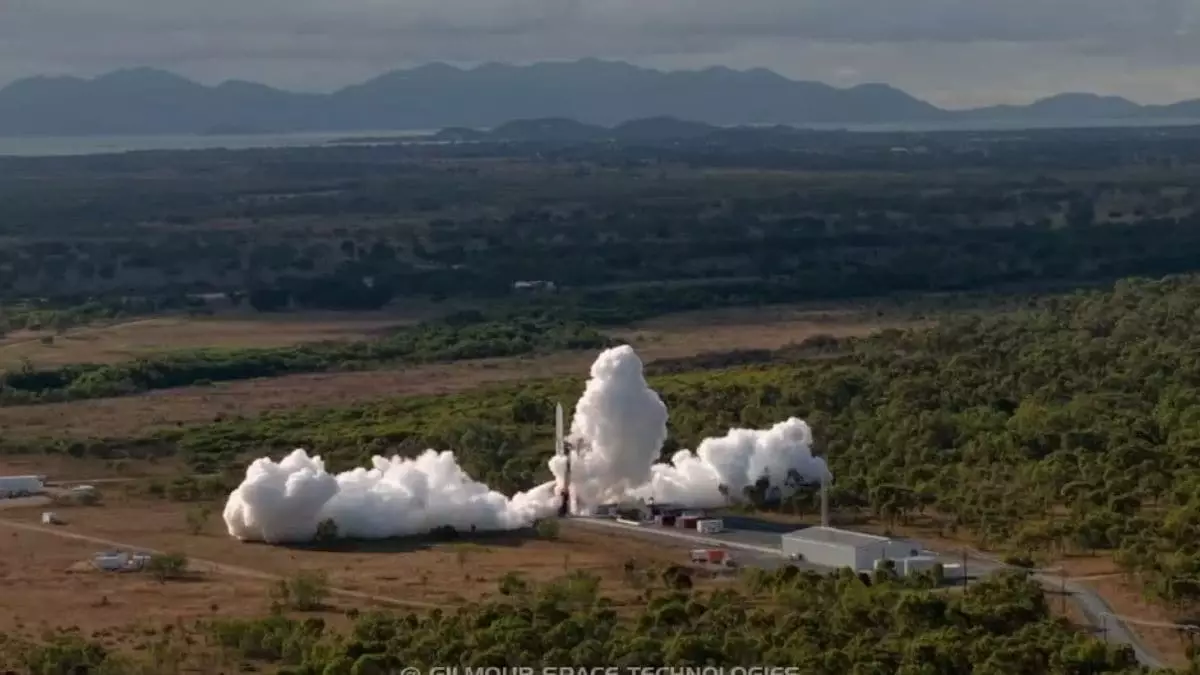Australia recently marked a pioneering moment in its spaceflight endeavors with the launch of the Eris rocket—an achievement that symbolized national ambition and technological potential. The moment, celebrated by many as a breakthrough, was marred almost immediately by the reality of early-stage engineering flaws. After a painstaking buildup that spanned years and setbacks, the launch on July 29th, 2025, was a stark reminder that ambition alone cannot compensate for developmental maturity. While it is tempting to hail this event as a giant leap for Australian space capabilities, a critical eye reveals a series of overzealous claims that outpace tangible results.
The launch attempt was ambitious, but also illustrative of a deeper issue: the overconfidence of emerging space programs often outstrips their technical readiness. The Eris rocket, developed entirely within Australia by Gilmour Space, was designed to showcase domestic innovation and propel the country onto the spacefaring map. Yet, the project’s trajectory—from multiple postponements due to weather and technical glitches to an almost immediate failure—calls into question the seriousness of the program’s long-term sustainability. These setbacks do not diminish the effort but highlight the importance of grounded expectations in a field renowned for its high costs and unforgiving nature.
Technological Hurdles and the Mirage of Progress
The failed launch was not merely an unfortunate accident; it underscored systemic vulnerabilities in Australia’s burgeoning space sector. The rocket’s sideways slide and quick descent back onto Earth mirror early failures of more established companies like Astra, emphasizing that rapid development without thorough testing can lead to embarrassing setbacks. Despite Gilmour Space’s assertive statements—claiming every flight provided invaluable data—the reality is that repeated failures undermine credibility and risk alienating potential investors and international partners.
Furthermore, the technical issue that delayed the launch multiple times—initially caused by a power surge—exposes the fragile state of Australia’s space infrastructure. The country’s space ambitions seem more aspirational than operational at this point, with much of the technology still in infancy. It’s problematic when nations celebrate milestones that are, in essence, fragments of potential rather than proven successes. While fostering innovation is crucial, it must be balanced with realistic assessments of capability and readiness; otherwise, projects risk becoming nationalistic symbols rather than sustainable industries.
Environmental and Safety Considerations
From an environmental perspective, the launch did not result in any injuries or ecological harm, which is a positive sign. However, such early-stage launches are inherently risky, and mock failures like this serve as uncomfortable reminders of the importance of comprehensive safety protocols. The Australian government and Gilmour Space must now confront the reality that space activities—especially those conducted in proximity to populated or environmentally sensitive areas—require meticulous planning and risk management.
The history of aerospace shows that failures often precede success. Still, in Australia’s case, there’s an urgent need to shift from celebrating symbolic milestones towards building resilient, tested systems capable of genuine operational deployment. Without this shift, Australia risks cultivating a space industry based more on rhetoric than substance—an outcome that could hinder national credibility in a competitive global arena.
Looking Beyond the Hype: What Australia’s Space Future Should Entail
While aspirations to become a notable player in space technology are admirable, the Australian space industry’s current trajectory appears overly optimistic. The foundational work, like launching a domestic rocket, is vital—but it must be accompanied by a mature understanding of the complexities involved. Building scalable, reliable space infrastructure demands patience, rigorous testing, and iterative learning—not just proud announcements and quick launches.
Moreover, Australia should view its ambitions as part of a broader, collaborative framework with international partners. Instead of viewing the space race as a national challenge to be conquered overnight, a more pragmatic approach would focus on fostering innovation through partnerships, research, and steady technological advancement. Relying heavily on national pride or individual company milestones can distract from the foundational necessities of safety, reliability, and sustained growth.
Australia’s space ambitions, if pursued with humility and strategic patience, have the potential to mature into meaningful contributions to international space efforts. But as it stands now, the pursuit risks becoming a symbolic gesture—more about reputation than tangible, lasting achievement. For true progress, the country must learn from its setbacks, invest in robust testing regimes, and frame its aspirations within a realistic timeline that prioritizes safety and long-term reliability over headline-grabbing moments.


Leave a Reply